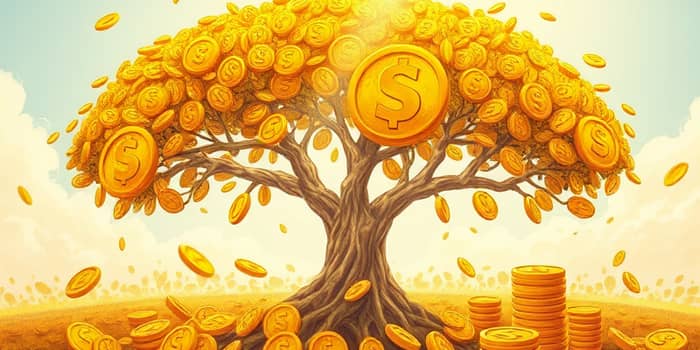
Building lasting wealth often hinges on harnessing the power of compounding. By reinvesting dividends, investors can transform modest payouts into a cascading cycle of growth that accelerates over time. This approach creates a snowball effect that magnifies returns and rewards patience.
Dividend reinvestment means taking the cash distributions you receive from stocks or funds and using them to buy additional shares automatically. Many brokers offer automatic dividend reinvestment plans (DRIPs) that allow investors to purchase fractional shares commission-free. This setup ensures every penny of dividends is put back to work, maximizing reinvestment effectiveness.
When dividends are reinvested, each new share purchased begins to generate its own dividends, creating a continuous cycle of growth. Over time, this compounding mechanism can significantly outpace the results of simply collecting dividends as cash.
Compounding occurs when earnings generate additional earnings. In the context of dividends, your original investment plus reinvested dividends grow together, leading to accelerating returns. The longer you remain invested, the more dramatic the compounding effect becomes. Early participation and consistency are the keys to unlocking substantial future gains.
Consistent reinvestment on payout dates also harnesses dollar-cost averaging, smoothing out market volatility by purchasing shares at varied prices. This disciplined strategy reduces the risk of mistiming the market and builds a larger position over time.
Real-world scenarios help demonstrate how powerful reinvesting dividends can be. Let’s explore two illustrative examples that showcase five- and ten-year horizons.
In this five-year example, an initial $10,000 investment at $50 per share grows to $26,336 when dividends are reinvested. Without reinvestment, the portfolio would lag significantly behind.
Consider a ten-year case with annual contributions. Starting with $10,000, adding $1,200 each year, and reinvesting dividends at a moderate yield, the balance can reach approximately $29,682. This illustrates the persistent impact of compound growth over a longer time horizon.
Using online calculators like DRIPCalc or TrackYourDividends can help visualize how small changes to yield or growth assumptions affect long-term outcomes. Even a 1% higher yield can materially boost final returns over decades.
While dividend reinvestment is powerful, it relies on companies maintaining stable payouts. Not all firms can sustain high growth or consistent dividends indefinitely. Investors should use conservative growth rates and monitor portfolio diversification to mitigate concentration risk.
Remember that share price appreciation and dividend increases are separate drivers of total return. Both factors should be considered, but they do not always move in tandem. A balanced, realistic model—with conservative assumptions—yields the most reliable long-term forecasts.
Enrolling in a DRIP is typically straightforward: contact your broker or investment platform and enable automatic dividend reinvestment for eligible securities. Many plans allow you to participate in company-sponsored programs directly, often without additional fees.
Once set up, dividends will automatically purchase additional shares on payment dates, including fractional shares. This disciplined approach requires minimal maintenance, allowing your portfolio to compound without constant oversight.
By harnessing the snowball effect of reinvested dividends, you can transform modest payouts into a formidable engine of wealth creation. Start early, remain consistent, and let the power of compounding work in your favor. Over time, small, regular reinvestments can yield disproportionately large rewards, helping you reach your financial goals faster.
References













